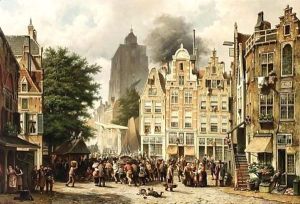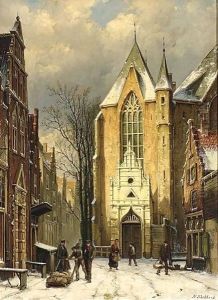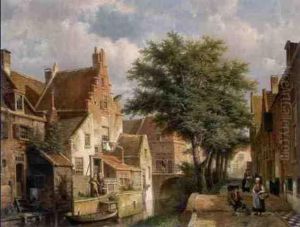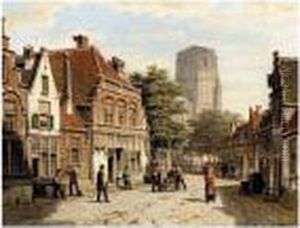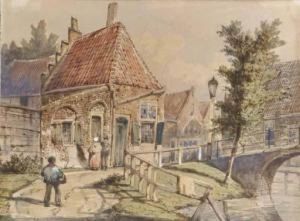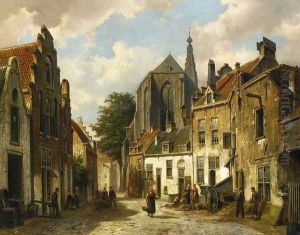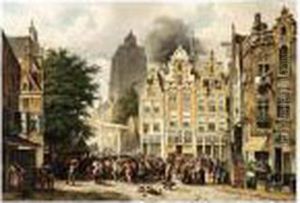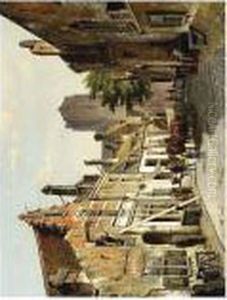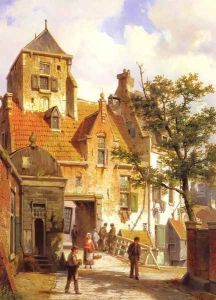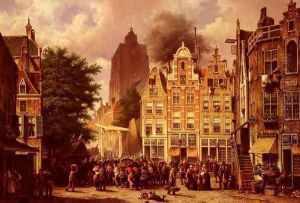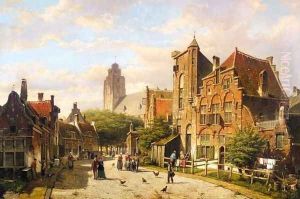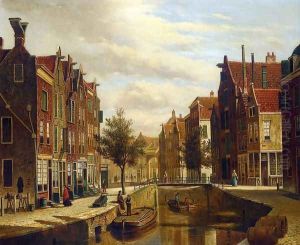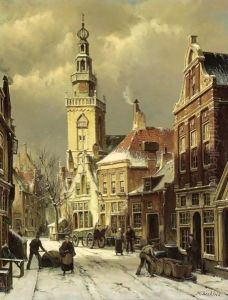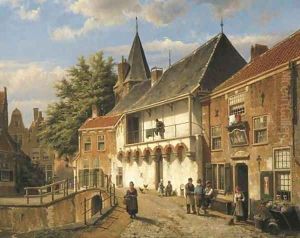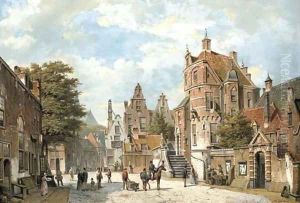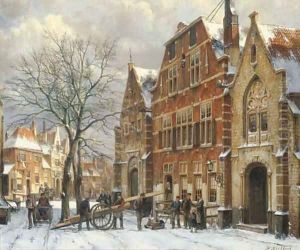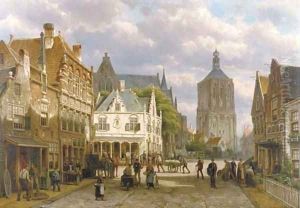Willem Koekkoek Paintings
Willem Koekkoek was a 19th-century Dutch painter, best known for his captivating scenes of city life and architecture during the Dutch Golden Age. He was born on January 13, 1839, in Amsterdam, into a family of artists. His father, Hermanus Koekkoek Sr., was a successful marine painter, and several other family members were also accomplished artists. This artistic environment greatly influenced Willem and set the stage for his future career.
Willem Koekkoek specialized in painting urban scenes and was particularly skilled at capturing the intricate details of buildings and street life. His work is characterized by a precise and meticulous approach, often featuring the brickwork of houses, cobbled streets, and citizens going about their daily routines. He was part of the 19th-century movement of Romanticism in art, which emphasized emotion and individualism, as well as a glorification of the past and nature.
Koekkoek's paintings are noted for their use of light and shadow, creating a sense of depth and atmosphere that draws the viewer into the scene. His compositions often included winter landscapes and townscapes, which were popular with art collectors during his time. Despite the romanticized nature of his work, Koekkoek's paintings also reflect a high degree of realism, making them valuable historical records of urban Dutch life in the 19th century.
Throughout his career, Koekkoek enjoyed considerable success and his works were sought after by collectors. He exhibited frequently and his paintings were widely appreciated for their technical skill and attention to detail. Willem Koekkoek died on January 29, 1895, but his legacy lives on through his contributions to Dutch art. His works can be found in various museums and private collections around the world, continuing to enchant viewers with their timeless beauty and historical importance.




